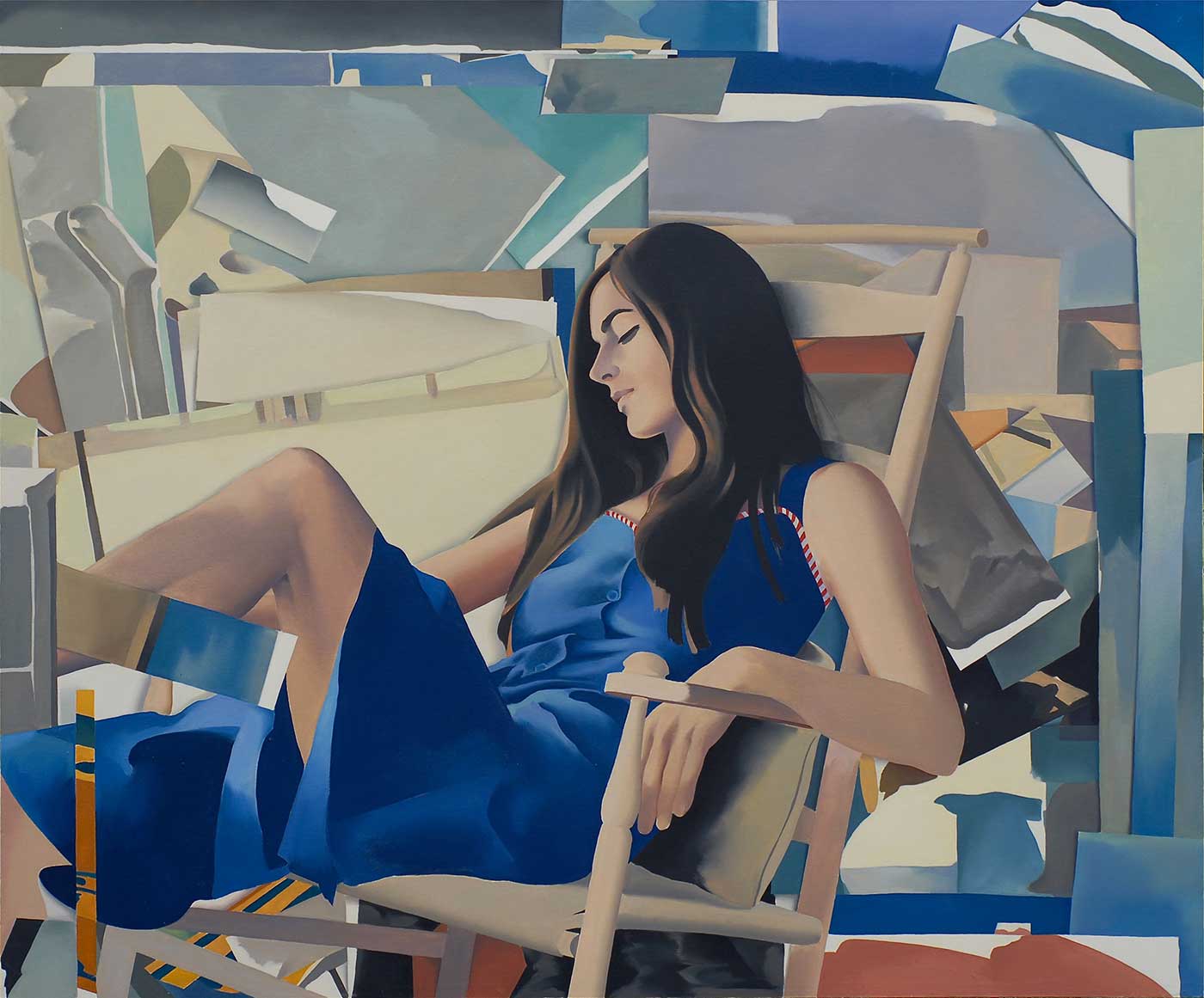
- Hesse Caplinger
Paintings / Works on Paper

- Hesse Caplinger
“Shank’s most recent- and the artist’s most socially and psychologically charged works to date- include vignettes about ideas, intelligence, volition, the marginalized, and the political. Art history intersects with portraits of historical, un-sung heroes with anguish-fraught lives. All are silhouetted in reflective poise, or in a moment of deep thought. Interestingly only one figure directly confronts the viewer with her authoritative gaze; that of mid-20th century, feminist writer, Ingeborg Bachmann.”
“The works ‘Paul Nizan in Aden’ (2006), ‘Ingeborg Bachmann in Rome’ (2007), and ‘Robert Musil at Mahrisch-Weisskirchen’ (2008) share a deliberate awkwardness, in which Shank incorporates a lyrical use of color along with shifting form, slippage of information, and deletes logical sequencing in preference towards iconic image building. In an effort to portray the figure, not just the image of the figure, subjectively, he simultaneously renders historical signifiers to depict subject matter. The realism and fiction of these works belongs to the artist and reflect his most imaginative expressions.”
- Shannon Fitzgerald
- David Bonetti
- Ivy Cooper
- Jessica Baran
“In 22 Young Men the focus on the subject is sustained across compositions of great variety and within a broad range of lighting, used with wonderful effect to heighten the contrast between textures. Flesh– heightened against flat, planar collaged backgrounds– invites touch. Other works - such as the 2014 ‘Reclining Figure Under a Night Sky’– also explore an older trope of body as landscape, encouraged by ambiguities of scale and by the craggy topography of patterned textiles that suggest mountainous terrain. These elements of narrative and landscape unfold in scenarios that are unfastened from specific markers of time and place. Throughout, the studio becomes the site of reverie. Seemingly unlabored, these works launch memories of past voyages and other times brought to life in the present, gathering in the space between the real person and the studio fiction.”
“These are images drained of the turmoil of real life, transporting us to imagined islands of calm and beauty. They recall the places where the artist lived or to which he traveled in the past: North Africa, the South of France, New Mexico, and Death Valley: where the arid landscape and simple monumental forms - refracted and abstracted - counterpoint the liquid gaze and flesh and sentient presence of the models; where suggestions of age and time, or more complex psychological histories, are backdrops to the languid figures who dream and gaze clear-eyed and in seeming indifference to the chaotic world of memory and experience around them. For Paul Shank, as for other artists before him, painting traces the shadow of past desires, giving back to the artist, and to his subjects, an image purged of time and change.”
- Angela MillerProfessor of Art History and ArchaeologyArts & SciencesWashington University in St.Louis